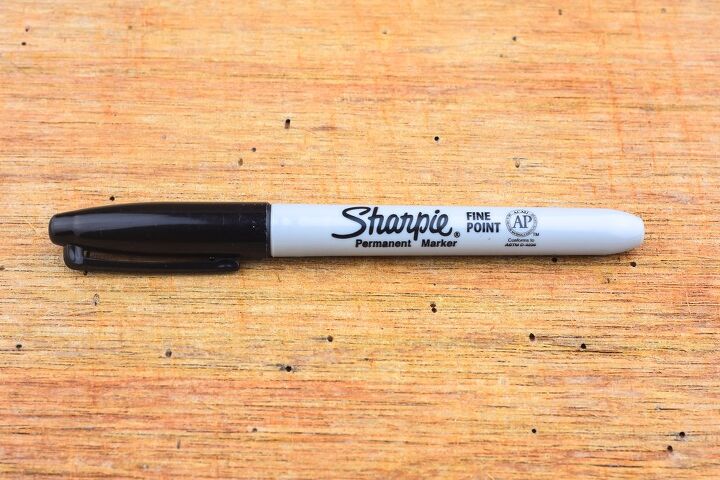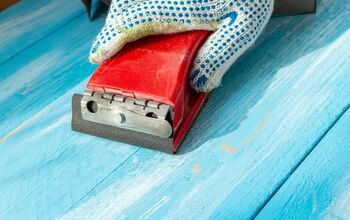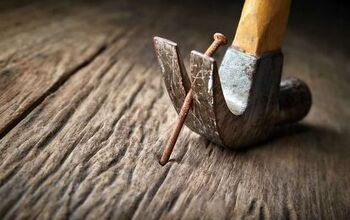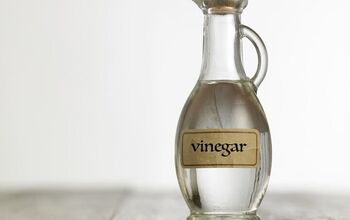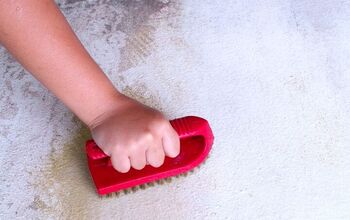How To Remove Sharpie From Wood (7 Ways To Do It!)

In many situations, a good Sharpie can come in handy. However, while a permanent marker can be an asset sometimes, it can be a pain in others. If the wrong surface gets marked (like your antique wood table), it can be quite tricky to remove Sharpie from wood. After all, there is a reason they call it “permanent.” F
To remove Sharpie from wood, use rubbing alcohol, hand sanitizer, nail polish remover, hairspray, or a magic eraser. Other options are baking soda, toothpaste, or a dry-erase board cleaner. Apply the product with a small dab on a towel or cotton ball, make sure to test it in an inconspicuous area first.
Fortunately, Sharpies are not as invincible as they may claim; there are some ways to get it off of unwanted surfaces like wood. Because there are multiple methods for removing Sharpie, we will outline each one in detail. This way, you never have to worry about the marker falling into the wrong hands.
Do You Need Wall and Ceiling Cleaning Services?
Get free, zero-commitment quotes from pro contractors near you.

Step By Step Guide To Remove Sharpie From Wood
What You’ll Need To Remove Sharpie From Wood
Realistically, you can choose one of the cleaning materials listed below to clean any markings on wood. However, some of these options are stronger and better at removing stains than others. Therefore, it might help to try multiple passes to see what works best for your situation.
You’ll need:
- Rubbing Alcohol
- Nail Polish Remover
- Hand Sanitizer Gel
- Melamine Foam
- Hairspray
- Baking Soda
- Toothpaste
- Dry-Erase Board Cleaner
- Cloth Towel
- Cotton Balls or Swabs
Option One: Nail Polish Remover
Considering that acetone is designed to remove nail polish, it can work wonders on Sharpie markings. However, this chemical is quite potent, so you have to be careful when applying it. Too much, and you could permanently stain the wood or leave colored patches once you finish.
- Step One: Grab a Cotton Ball or Swab — Make sure that it is fresh and completely dry.
- Step Two: Dip the Cotton Into the Acetone — One easy method for doing this is to place the cotton ball on the acetone bottle’s opening and flip it over quickly. Don’t let the bottle stay upside down for too long, however, or it could soak through the cotton and drip onto the floor.
- Step Three: Dab the Marker Stain — You want to avoid rubbing or scraping the wood, as you could alter the coloration of the surface itself. Instead, place a small amount on the stain and let it sit for a few moments.
- Step Four: Wipe Off the Acetone With a Towel or Rag — Again, use a dabbing motion to remove the acetone. This way, you reduce the risk of spreading the cleaning solution around too much.
- Step Five: Repeat as Necessary — If the marking is small, you may be able to get it on the first pass. Realistically, however, you will have to do multiple passes to get rid of it all.
Option Two: Rubbing Alcohol
This liquid works similarly to nail polish remover, meaning that it can be quite potent. However, it is one of the most effective methods for removing Sharpie, so it can help if you have a large stain. You can simply follow the steps listed above. Just be sure that you are using a fresh cotton ball or swab and don’t rub the stain too aggressively. Regardless of the method you choose, it is best to work slowly and methodically, rather than rush the cleaning process.
Option Three: Melamine Foam
This material is commonly known as a “magic eraser,” as it can work well for removing all kinds of stains from various surfaces. We recommend this option if the Sharpie marking is relatively small and fresh. If the mark has had a lot of time to set in (i.e., days or weeks), then you will likely need something stronger to remove it. However, melamine foam should help scrub off some of the marker layers, making it easier to clean with another method.
- Step One: Rub the Stain –– Use a clean end of the foam to rub some cleaning solution into the marking.
- Step Two: Let Sit — You want the foam to set into the Sharpie so that it will rub off more easily.
- Step Three: Wipe Down With a Rag — In some cases, the marking will immediately come off when using the eraser. However, if it doesn’t, you can use a towel or rag to finish the job. Repeat these steps as necessary.
Option Four: Hand Sanitizer Gel
Since most hand sanitizers use alcohol-based solutions, they can work well for Sharpie markings. Also, if you have stains on a dry erase board, hand sanitizer can work wonders on that kind of surface as well.
- Step One: Place a Drop of Sanitizer on the Marking — As with the other methods, it is better to work slowly and thoroughly. If you put too much sanitizer on the wood, it can seep in and cause the color to fade. Also, it could remove any finish or coating on the surface.
- Step Two: Dab the Spot With a Cloth or Rag — Again, don’t scrub the stain; let the cloth do most of the work.
- Step Three: Repeat as Necessary — For fresher markings, hand sanitizer should work well. However, if the Sharpie has had time to sit, you will need to do multiple passes to remove it all.
Option Five: Baking Soda
Chances are that you have a box of this lying around, potentially in your refrigerator. Baking soda is actually one of the most useful cleaning products in your home; you just may not be aware of its potential. While you can use baking soda for many situations, it does help remove Sharpie from wood surfaces.
- Step One: Create a Paste — Mix the soda with a little bit of water. We recommend using a small bowl to mix the ingredients. The paste should be relatively thick, but not so much that it will retain its shape. The baking soda’s purpose is to clean and agitate the wood, making it easier to clean any stain.
- Step Two: Place a Small Dab On the Wood — Since the soda is granular, it can scratch the surface and leave permanent markings. You want to use a small amount at a time to avoid this problem.
- Step Three: Wipe Away Gently — Fortunately, the paste will do much of the work, so you don’t have to rub it in to get a clean finish. Repeat as necessary to get rid of the whole stain.
Option Six: Hairspray
The chemicals found in standard hairspray can work really well on Sharpie and other permanent markers. In fact, compared to some of the other methods on this list, hairspray is one of the fastest and most reliable options available.
- Step One: Spray the Affected Area — Since most hairsprays don’t contain caustic chemicals, it shouldn’t discolor the wood. However, you don’t want to go overboard, either.
- Step Two: Let Sit — In some cases, you may be able to see the hairspray work in real-time to lift the Sharpie from the surface.
- Step Three: Wipe Away — Use a soft cloth to wipe down the wood, and the Sharpie should come off with it. Typically, you only need one application of hairspray to get the job done.
Option Seven: Toothpaste
This method works similarly to baking soda. The paste will agitate the stain and help remove it from the wood. However, because toothpaste is not as powerful as other materials, we only recommend it for fresh markings. Otherwise, you’ll have to go through a lot to get rid of old stains. Also, gel-based products won’t work – you will have to use a toothpaste with baking soda as an active ingredient.
- Step One: Squeeze a Dab Onto the Stain — Again, start small and work your way around.
- Step Two: Let Set –– It should take about a minute or less for the active ingredients to get into the Sharpie.
- Step Three: Wipe Off — In most cases, you’ll have to do multiple passes to get it all.
Option Eight: Dry-Erase Board Cleaner
You can use a small amount of spray to remove Sharpie from wood, the solvents in the cleaner work to remove the Sharpie. But, do not use dry-erase board cleaner or unfinished wood surfaces, only polished or lacquered wood.
One trick is to go over the Sharpie spot with a dry eraser marker first. (Incidentally, this same technique will get Sharpie off your dry-erase board if you grabbed your Sharpie instead of a dry erase marker).
Tips And Tricks For Removing Sharpie From Wood
Although these cleaning methods are relatively straightforward, you can run into some problems along the way. Here are some tips for getting the stain out more comfortably.
- Start On an Unseen Spot — Ideally, the markings will be somewhere that is not immediately noticeable. Regardless of its position, you need to start on a small section to see if the cleaning solution will ruin the wood. Doing this will ensure that you don’t get too far before noticing any adverse reactions.
- Only Work on Stained or Treated Wood — Most wooden furniture has a protective layer on it. The Sharpie will absorb into this layer, so the faster you catch the mess, the easier it is to clean. However, if you manage to get Sharpie on unstained wood, you can usually sand it off instead using broad strokes and fine-grit sandpaper with a palm sander.
- Only Treat the Spot — Don’t apply the product over a large area, only the spot with the Sharpie.
- Reapply the Stain Afterward — No matter which method you use, it will take off most of the protective layer. Be sure to coat the wood after cleaning it so that it will blend with the rest of the furniture.
Don’t Use These Items To Remove Sharpie From Wood
If the wood is finished or sealed do NOT use sandpaper. Only sand wood that is unfinished. Also, do not use a scrubby sponge. Using absorbent cloths is best.
Do You Need Wall and Ceiling Cleaning Services?
Get free, zero-commitment quotes from pro contractors near you.

Related Questions
What if the Sharpie stain has been there for a long time?
Hopefully, you can catch any markings as soon as they occur. However, perhaps you purchased some furniture that came with old Sharpie stains. In that case, the marker is likely permanently absorbed into the wood.Most of these cleaning solutions work because of the staining or painting that goes on wooden surfaces. After a while (i.e., years), it can be impossible to remove Sharpie. However, you can try some of these methods to lighten the markings to be less noticeable.
Can I use these methods to get Sharpie off of other surfaces?
As a rule, the less porous the surface, the easier it is to wipe the permanent marker off. These methods should work on most materials, particularly plastic and metal. For example, using a Magic Eraser is typically all you need to get Sharpie off of a painted wall without removing or messing up the paint.

We are a team of passionate homeowners, home improvement pros, and DIY enthusiasts who enjoy sharing home improvement, housekeeping, decorating, and more with other homeowners! Whether you're looking for a step-by-step guide on fixing an appliance or the cost of installing a fence, we've here to help.
More by Upgraded Home Team



